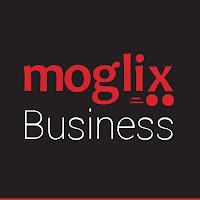How To Save Big On Office Supply Expenses Through Supplier Consolidation
Supplier consolidation is the process of reducing suppliers within a specific supply market and focusing on the most successful suppliers within the same supply market. Aimed to reduce supply chain costs and improve efficiency, consolidating suppliers is a strategy that can be implemented by any industry. The global business environment is an inherently complex environment. Understanding the types and costs of such complexity is important in order to identify and eliminate the causes of waste, expense and risk.
Reduce Purchasing Costs
As the number of suppliers is reduced, buying power increases. Strategic sourcing processes can be employed to introduce competition and lower purchase prices. Price and other associated landed costs (i.e., shipping, handling, taxes and duties/ fees) are together referred to as purchased costs. As the number of suppliers rises, the annual incremental savings associated with these purchased costs decreases, both for indirect spending overall, but also for lower-level spending categories such as general equipment and supplies (e.g., office supplies and furniture). The idea is to open up a broader market basket to suppliers and see what the market will bear, rather than bring preconceptions of what suppliers can or cannot do. Of course, there is a limit to hard-dollar savings driven by supplier consolidation. As supplies become more commoditized, there are fewer price differences to be found among suppliers. At the end of the day, there are only so many dollars to squeeze out of a ream of paper or an office chair. While organizations need to explore these savings, they also need to challenge themselves to look for other ways to deliver value and ROI.
Fewer Suppliers, Fewer Problems
Fewer suppliers simplifies process automation, in turn reducing P2P costs. Make it extremely easy and intuitive for requisitioners to find what they are looking for with preferred suppliers. If they have budget and can find what they need within the corporate catalog, the process should be 100% automated, foolproof and transparent.
Use suppliers themselves as monitoring agents and change agents in the process. The procurement organization and budget owners might be unaware that the supplier already has capabilities to meet apparently nonstandard requirements.
One of the hallmarks of world-class procurement organizations is their ability to source suppliers strategically even though the spend itself may not be very strategic. What we mean is that suppliers that have made it through the consolidation process are managed in a way that is similar to more strategic suppliers; namely, they are held accountable to a broader set of performance requirements which are both multi-year and multi-pronged. And this is not merely a compliance tactic for tapping suppliers’ but a very practical step to get knowledge of best practices more broadly based on their work with other customers. In fact, many similar best practices go hand in hand with supplier consolidation.
Try Moglix Business ! We are Reimagining procurement and supply chain technology.
Reduce Purchasing Costs
As the number of suppliers is reduced, buying power increases. Strategic sourcing processes can be employed to introduce competition and lower purchase prices. Price and other associated landed costs (i.e., shipping, handling, taxes and duties/ fees) are together referred to as purchased costs. As the number of suppliers rises, the annual incremental savings associated with these purchased costs decreases, both for indirect spending overall, but also for lower-level spending categories such as general equipment and supplies (e.g., office supplies and furniture). The idea is to open up a broader market basket to suppliers and see what the market will bear, rather than bring preconceptions of what suppliers can or cannot do. Of course, there is a limit to hard-dollar savings driven by supplier consolidation. As supplies become more commoditized, there are fewer price differences to be found among suppliers. At the end of the day, there are only so many dollars to squeeze out of a ream of paper or an office chair. While organizations need to explore these savings, they also need to challenge themselves to look for other ways to deliver value and ROI.
Fewer Suppliers, Fewer Problems
Fewer suppliers simplifies process automation, in turn reducing P2P costs. Make it extremely easy and intuitive for requisitioners to find what they are looking for with preferred suppliers. If they have budget and can find what they need within the corporate catalog, the process should be 100% automated, foolproof and transparent.
Use suppliers themselves as monitoring agents and change agents in the process. The procurement organization and budget owners might be unaware that the supplier already has capabilities to meet apparently nonstandard requirements.
One of the hallmarks of world-class procurement organizations is their ability to source suppliers strategically even though the spend itself may not be very strategic. What we mean is that suppliers that have made it through the consolidation process are managed in a way that is similar to more strategic suppliers; namely, they are held accountable to a broader set of performance requirements which are both multi-year and multi-pronged. And this is not merely a compliance tactic for tapping suppliers’ but a very practical step to get knowledge of best practices more broadly based on their work with other customers. In fact, many similar best practices go hand in hand with supplier consolidation.
Try Moglix Business ! We are Reimagining procurement and supply chain technology.



Nice Article Post Thank You For Sharing.Most Renowned Industrial Supplies Company in India
ReplyDeleteNice Article Post Thank You For Sharing.PVC Floor Tiles | PVC Tiles Manufacturer | PVC Floor Tiles Suppliers in India
ReplyDelete